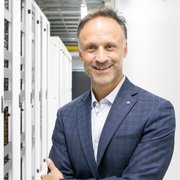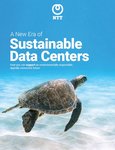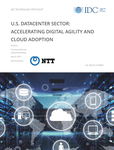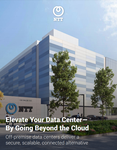Worldwide, data centers consume an estimated 200 terawatt hours per year. This represents both a challenge and an opportunity for the sector. So, how can we reduce power consumption while translating sustainability into direct customer benefits?
Historical sustainability measures
So far, sustainable data centers have redesigned their facilities to greatly reduce water consumption using new technologies for water-cooling. New battery technologies enable them to use fewer, and longer-lasting, batteries. They also work closely with local power utilities to explore ways to increase the mix of green power they run on.
Sustainable data centers also work to minimize the amount of energy it takes to diffuse heat created by hardware. Anyone who knows servers knows that heat is the enemy, and it has historically taken a great deal of power to cool them to the point where they function properly. More efficient cooling technology enables data centers to slash their energy consumption – reducing costs as well as becoming more sustainable.
On the recycling front, data centers have set up specific recycling programs with dedicated bays for customers’ recyclables. Making recycling easy helps clients move closer to their own sustainability goals, while helping us, as providers, to limit the amount of waste our facilities create.
We also work with cutting-edge technology solutions to track and reduce consumption. Integrated building management systems and software solutions can track how our data centers are performing in order to ensure they aren't wasting energy. Many modern data centers, like ours, utilize innovative data hall layout designs that maximize efficiency while minimizing waste by optimizing the cold to hot airflow.
Sustainability at 175 Zettabytes
Today, data centers are more interconnected than ever. When you add cloud connectivity and shrinking data transfer latency to the mix, you get a mountain of data moving in and out of data centers around the world.
In fact, IDC estimates that the global data load will rise to a staggering 175 Zettabytes (ZB) by 2025. Managing this level of data and processing expansion poses significant (yet, not insurmountable) technological, operational, and sustainability challenges.
One obvious solution is finding more efficient methods to use space and power. For example, we can potentially build racks higher in order to create more server space within a smaller footprint. A smaller footprint means we can utilize more regimented cooling in a more contained environment.
Increasing density and managing containment more efficiently are solutions we can easily implement today to help prepare for a 175ZB world. But new technology and processes may yield even better solutions and savings.
For example, we can use new, low-impact, direct liquid-cooling systems to limit the active movement of air over the servers – eliminating the need to cool the entire data hall and reducing energy consumption and cost.
Speaking of water, data centers are also increasingly replacing wasteful, traditional water evaporation cooling systems with innovative closed-loop systems. These systems utilize recycled water rather than fresh in order to reduce the burden on local water systems.
Running data centers ‘hot’ is also a hot topic in the industry today. Operating data halls at the maximum heat a server can withstand may reduce energy consumption. That said, anytime you operate anything at the edge of tolerability, you're at an increased risk of failure – or, in the case of data centers, up-time. Until we can somehow mitigate the downsides, ‘hot’ data centers likely pose too many potential risks – at least, for now.
We and our clients are equally dedicated to operating more sustainably. But how do we make sustainability sustainable from a financial point-of-view?
The economics of data center sustainability
It's not hyperbole to say that the future of the world is at risk if we don't adopt greener, more sustainable systems and practices. We understand this, and our clients understand this. Luckily, sustainability often goes hand-in-hand with efficiency, and efficiency with cost-savings.
Even though most data center clients take sustainability seriously, there are those for whom it takes a backseat to the bottom-line. Short-term costs associated with sustainability initiatives often make some clients skittish. That said, one only needs to look at (and explain) the potential long-term cost-savings of doing business more efficiently (ie. sustainably).
One simple way data center providers can assuage cost-conscious clients is by working closely with local utilities in order to find more efficient ways to provide greener energy options to their product mix. We can then pass on any potential energy-cost savings to customers. For us, our clients, and the world, it's a win-win-win.
That's why it's important that clients grill any potential data center partner about their present and future sustainability provisions and initiatives. ‘Sustainability’ shouldn't be a surcharge, it should be a matter of course. There are smart ways to be a sustainable consumer, and you shouldn’t have to trade off or compromise between effectiveness and cost. It's our job as providers to help you strike that balance.
Sustainability will evolve and so will our data centers
Change (and rapid change at that) is the only real certainty in life and business. But we are always looking ahead and investing in ways to make data centers more efficient and sustainable.
Whether it's innovative technologies like liquid chip-based cooling or improving upon how we design data hall layouts, we have dedicated ourselves to reducing consumption as well as our overall environmental impact. We do it because together, we can change the world for the better – for our clients and for the whole world.





